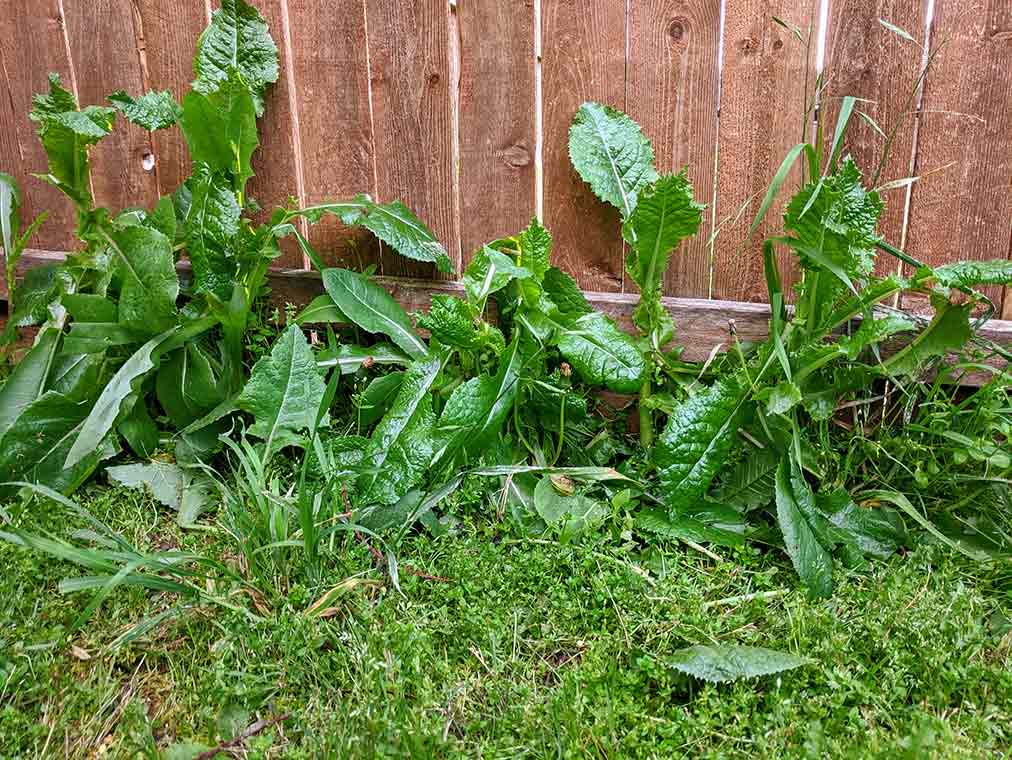
Broadleaf weeds are a type of plant that can be found in many lawns and gardens. They are characterized by their wide, flat leaves and their ability to quickly spread throughout an area. While they may look attractive at first glance, broadleaf weeds can quickly take over an area if left unchecked. Join the Tuxedo team as we explore everything you need to know about broadleaf weeds, and be sure to check out our guide to lawn weeds in northern Utah for even more information!
Are Broadleaf Weeds Bad?

When it comes to the health and appearance of your lawn, broadleaf weeds are one of the last things you want to see popping up through your grass. Though they can sometimes memorize you with their bright flowers and unique characteristics, broadleaf weeds will ravage your lawn and yard once they take hold. Weeds of any kind deplete the soil’s natural resources with their complex and invasive root systems, many of which grow in a shallow manner in order to get first access to nutrients and water. This includes any fertilizers applied to your lawn, meaning that even basic lawn care tasks will worsen a broadleaf weed invasion once it has begun. If broadleaf weeds are allowed to grow freely in your yard, your lawn and other healthy plants will become weaker as a result.
What Do Broadleaf Weeds Look Like?
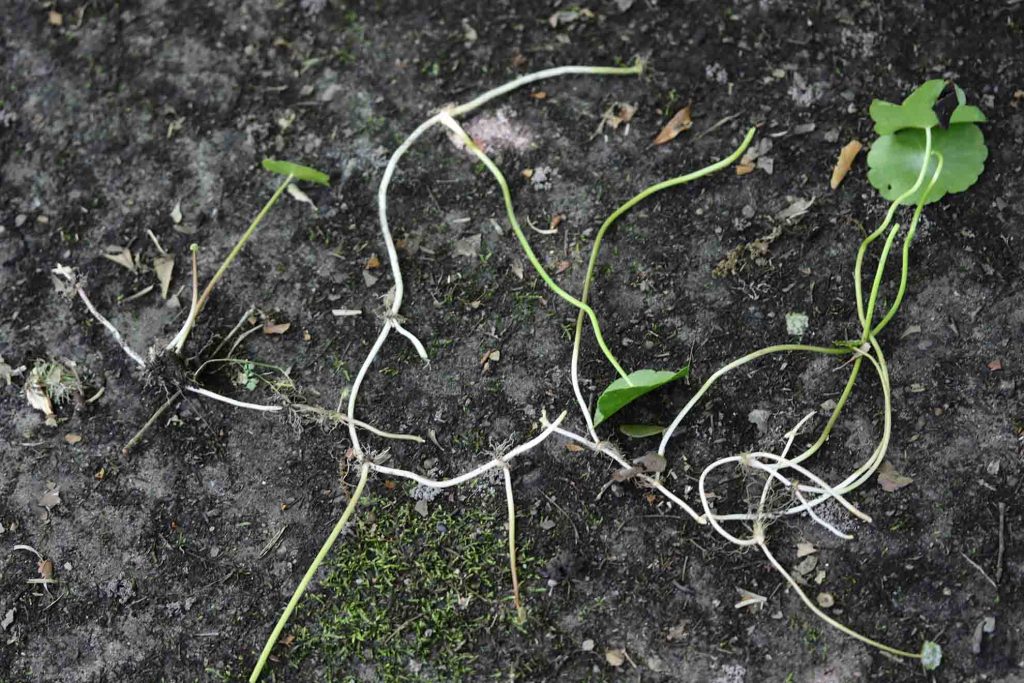
As one might expect, broadleaf weeds have leaves that are wide and flat, often appearing much larger than the thinner grass blades that make up a lawn. Many broadleaf weeds also develop colorful flowers (like the common dandelion or blue violet) that make identifying broadleaf weeds in lawns easier. However, many of these flowers look identical to healthy, desired flowers in gardens and flower beds, but broadleaf weeds are much more aggressive and will damage any nearby vegetation. Though it can be difficult to spot some of these pesky plants when they first start appearing in your yard, you should be able to recognize broadleaf weeds once you are familiar with some of their more unique traits.
Key Characteristics Of Broadleaf Weeds:
- Leaves are known for their net-like veins that transport nutrients, as well as their wide blades that are often serrated or lobed.
- Stems are typically slender and long, and many broadleaf weeds spread by stolons that crawl across the top of your soil.
- Root systems often contain central taproot, fibrous roots and rhizomes near the soil surface, or a combination of both.
- Flowers may be produced singularly, or they may be produced in clusters at the ends of stems (not all broadleaf weeds produce flowers).
- Seed heads are typically (but not always) delicate and cotton- or oat-like in appearance, emerging after flowers bloom and fully mature.
- They are dicots that have paired cotyledons, which are two seed leaves that usually appear during germination.
Where Do Broadleaf Weeds Grow?
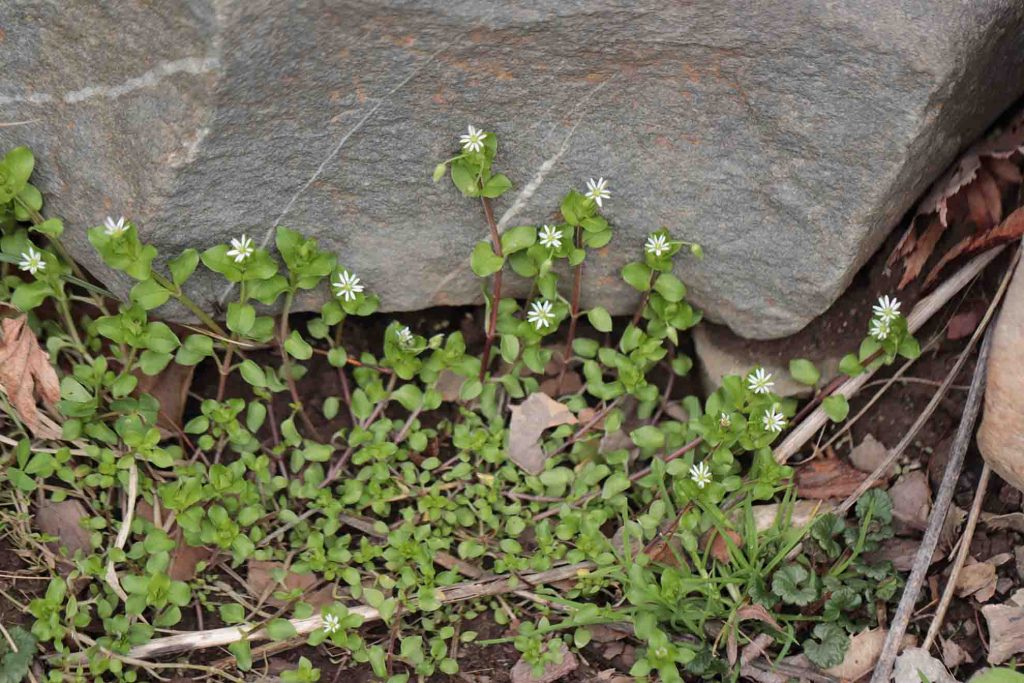
Broadleaf weeds can be found in both lawns and gardens, usually preferring the same sunny conditions in which other plants thrive. Broadleaf weeds with shallow root systems often take advantage of areas where soil is left compacted or low-lying after construction or heavy foot traffic. Areas around curbs and sidewalks are especially susceptible to broadleaf weed growth due to the lack of air circulation near the base of these structures, as well as any over watering that might occur when sprinklers are used near them. Broadleaf weeds love excess water and nitrogen in the soil, so it is important to be extra careful when tending to the needs of your yard.
In addition to growing in already-established areas, broadleaf weeds are also known to grow in disturbed or bare soils if there are no other desirable plants present. This means you should be extra vigilant when making changes to your yard, such as seeding or turning over soil, as these activities can create the perfect environment for broadleaf weeds to take hold and spread. Basically, anywhere that healthy plants can (or can’t) grow, so too can broadleaf weeds!
When Do Broadleaf Weeds Grow?

Broadleaf weeds typically grow and reproduce quickly in the spring and summer months due to their fast rates of photosynthesis, which helps them store energy that will eventually be used for aggressive reproduction. Different types of broadleaf weeds, however, do grow at different times of the year, making the life cycle of a broadleaf weed differ from species to species.
Annual Broadleaf Weeds
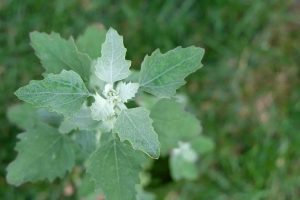
Annual broadleaf weeds can grow in either summer or winter, depending on the species. Summer annuals germinate in spring and mature/set seeds in summer to late fall, while winter annuals germinate in late summer or fall, go dormant over winter, and set seeds in early spring. As these plants live only 1 year, they do not develop overly complex root systems, making them easier to remove before maturing.
Common Examples:
- Chickweed
- Lamb’s quarters
- Purslane
- Spotted spurge
Biennial Broadleaf Weeds
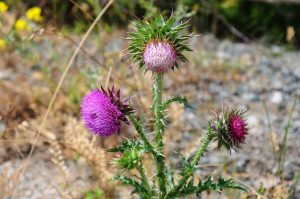
Biennial broadleaf weeds live for about 2 years, as the name would suggest. True biennial weeds develop only stems, leaves, and roots in the first year before going dormant over winter. The weeds will return to life in spring, and produce flowers and seed heads in their second year to spread the invasion before dying. Some mature annuals behave as biennials by overwintering and living through 2 seasons, but this is dissimilar from the aforementioned life cycle of true biennial weeds.
Common Examples:
- Musk thistle
- Wild carrot
- Wild parsnip
- Burdock
Perennial Broadleaf Weeds

Perennial broadleaf weeds, unlike annuals, are more hardy and can return for several years if they are not removed. Different species can grow throughout various seasons and climate conditions, which makes them a much more formidable foe! Perennial weeds develop complex root systems and often develop seed heads, making the spread of these types of weeds twofold and much more difficult to control. These types of broadleaf weeds are some of the most common in northern Utah.
Common Examples:
- Dandelion
- Violet
- White clover
- Field bindweed
How Can I Control Broadleaf Weeds?

Preventing broadleaf weeds through proper lawn care and gardening practices is always the best way to maintain a healthy yard. Because of the varieties of these weeds and the aggressive ways they can spread, removing established weeds may be challenging. Mowing regularly and slightly higher than normal is a great way to keep your grass healthy while blocking sunlight from germinating weed seeds. Proper fertilization is also key throughout the growing season, but too much can produce excess nitrogen in the soil, which many weeds love.
If you’ve identified the presence of broadleaf weeds on your property, there are a few things you can do to remove them. However, removing broadleaf weeds with chemical weed killers can damage your lawn if you don’t know what you’re doing. Instead, consider utilizing a professional weed control service, like the one offered by us here at Tuxedo Yard Care! Otherwise, please keep the following methods and tips in mind when you are working out in the yard this season!
- Hand-Pull: Best for shallow roots. Be sure to pull firmly and steadily near the base of the plant, and do not leave any root or stem fragments behind.
- Dig Roots: Best for deep taproots or fibrous roots. Use a gardening spade or other tool to dig under and around the soil containing the root system.
- Apply Pre-Emergent: Best for seedlings in soil. If some weeds have emerged, others are likely waiting, and they can be blocked from emerging with preventive herbicides.
- Apply Post-Emergent: Best for emerged, matted weeds. Use a selective weed killer (2, 4-D) directly on the emerged weed, but make sure you do not apply any to your grass.



